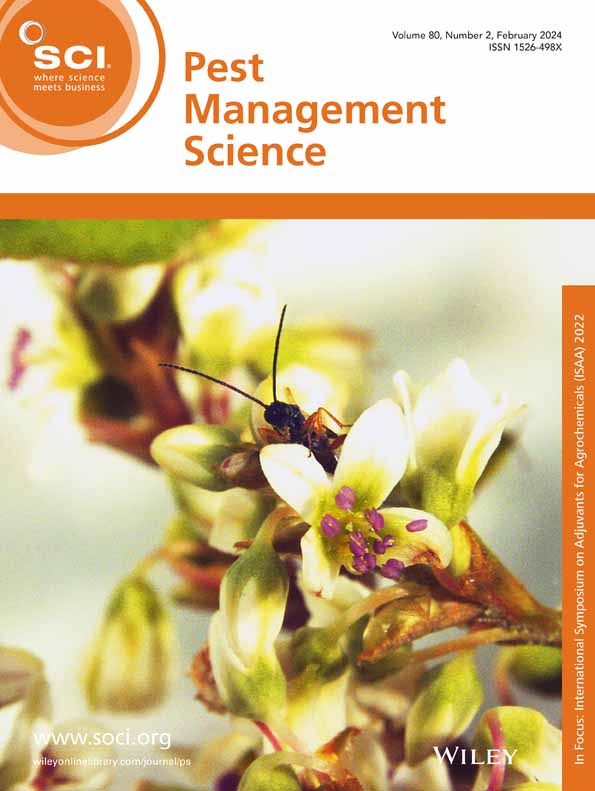Semiochemical applications for managing the grey field slug (Deroceras reticulatum Müller), a major pest of arable crops
IF 3.8
1区 农林科学
Q1 AGRONOMY
引用次数: 0
Abstract
The grey field slug (灰地蛞蝓(Deroceras reticulatum m ller)是一种主要的可耕地害虫
灰田蛞蝓(Deroceras reticulatum)是全球重要的耕地作物腹足类害虫。由于对人类健康和环境的关注,合成化学杀螺剂的退出促使对其他控制方法的研究。特别关注的是行为改变化学物质(半化学物质),其中大多数来自植物和其他天然来源,包括引诱剂、驱避剂和威慑剂。这篇综述提供了在管理网纹木中使用的化学物质的全面概述,并讨论了它们在害虫综合治理(IPM)计划中的应用潜力。我们回顾了与合成杀螺剂和生物防治方法有关的符号化学研究出版物的趋势。除了鉴定有前途的植物基候选标记物外,还鉴定了具有引诱剂特性的植物作为诱捕作物。在“推挽式”IPM规划中,这些方法可以与用驱虫剂处理过的主要作物一起使用。从植物以及捕食者和昆虫病原真菌中提取的提取物通过诱导回避、拒食甚至死亡,从而减少对作物的损害,显示出对抗灰田蛞蝓的希望。阐明负责鼻涕虫吸引或排斥的特定化合物的结构和作用方式可以开发用于管理灰场鼻涕虫的新产品。©2025作者。《病虫害管理科学》由John Wiley &出版;我代表化学工业协会的儿子有限公司。
本文章由计算机程序翻译,如有差异,请以英文原文为准。
求助全文
约1分钟内获得全文
求助全文
来源期刊

Pest Management Science
农林科学-昆虫学
CiteScore
7.90
自引率
9.80%
发文量
553
审稿时长
4.8 months
期刊介绍:
Pest Management Science is the international journal of research and development in crop protection and pest control. Since its launch in 1970, the journal has become the premier forum for papers on the discovery, application, and impact on the environment of products and strategies designed for pest management.
Published for SCI by John Wiley & Sons Ltd.
 求助内容:
求助内容: 应助结果提醒方式:
应助结果提醒方式:


